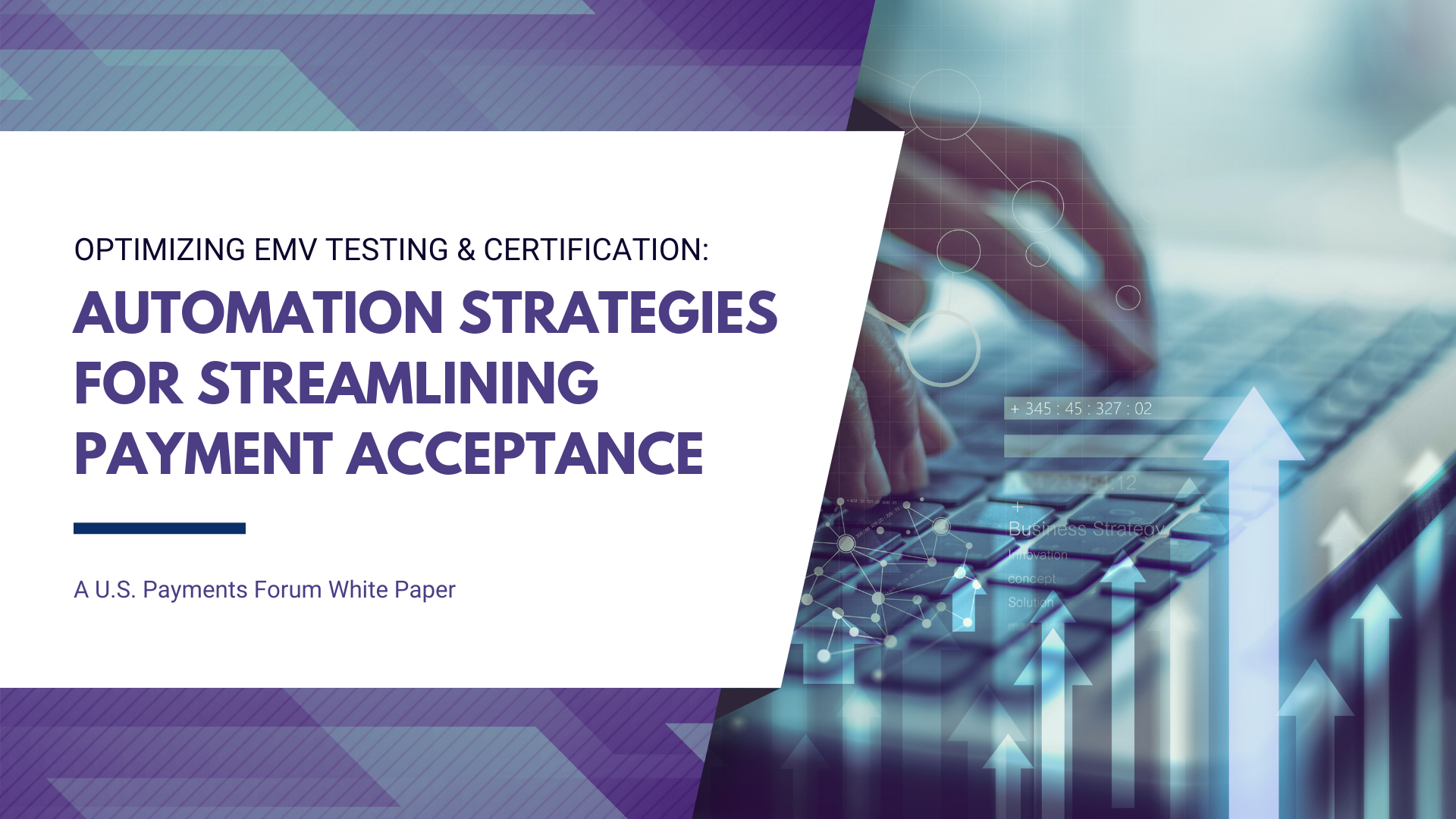Optimizing EMV Testing & Certification: Automation Strategies for Streamlining Payment Acceptance
Publication Date: May 2025
Executive Summary
The payments industry is undergoing rapid transformation, driven by evolving consumer demands and technological advances. As EMV and contactless payment solutions become more widespread, the need for rigorous and efficient testing methodologies has never been more essential. This white paper explores the critical role of test automation in enhancing the quality, speed, and reliability of payment acceptance applications.
In traditional testing environments, the reliance on manual processes has often led to inefficiencies, increased costs, and longer time-to-market for payment acceptance applications. With the growing complexity of payment ecosystems, these challenges have become even more pronounced. Two practices are discussed to help address these issues as a strategic imperative: the adoption of Continuous Integration and Continuous Delivery/Continuous Deployment (CI/CD) practices; and the adoption of advanced test automation frameworks, such as orchestrating software that can coordinate and manage test planning and test execution using test environments that are a combination of card and host simulators and robot framework to simulate user interface and inputs.
Test automation offers numerous potential benefits, including the reduction of manual workloads, the expansion of test coverage, increased reliability and quality of the test execution, and the ability to conduct more robust and repeatable testing processes. These capabilities can help enable organizations to identify and resolve potential issues early in the testing process and during the development cycle, resulting in more stable, reliable payment solutions with faster integration and deployment of applications. Additionally, automated testing supports the ability to continuously validate security protocols and compliance with industry standards, which are critical in maintaining consumer trust and safeguarding transactions. Automation can not only provide a competitive edge but may also reduce overall costs and free up resources for innovation. As the payments landscape continues to evolve, exploring these technologies will be essential for maintaining competitiveness and delivering secure, seamless payment experiences.
In summary, in addition to the current simulators that are widely available, the expansion and extension of test automation in the payments industry’s payment acceptance application development lifecycle are important considerations for quality and efficiency. This white paper outlines the potential strategic importance and tangible benefits of adopting these practices for all stakeholders that are involved in payment infrastructures such as, but not limited to, application developers, gateways, merchants, acquirers, and payment networks. By automating, organizations can help to ensure that they are well-equipped to meet the challenges of the future while delivering secure, reliable, and innovative payment solutions.
Please note: The information and materials available on this web page (“Information”) is provided solely for convenience and does not constitute legal or technical advice. All representations or warranties, express or implied, are expressly disclaimed, including without limitation, implied warranties of merchantability or fitness for a particular purpose and all warranties regarding accuracy, completeness, adequacy, results, title and non-infringement. All Information is limited to the scenarios, stakeholders and other matters specified, and should be considered in light of applicable laws, regulations, industry rules and requirements, facts, circumstances and other relevant factors. None of the Information should be interpreted or construed to require or promote the establishment of any solution, practice, configuration, rule, requirement or specification inconsistent with applicable legal requirements, any of which requirements may change over time. The U.S. Payments Forum assumes no responsibility to support, maintain or update the Information, regardless of any such change. Use of or reliance on the Information is at the user’s sole risk, and users are strongly encouraged to consult with their respective payment networks, acquirers, processors, vendors and appropriately qualified technical and legal experts prior to all implementation decisions.

